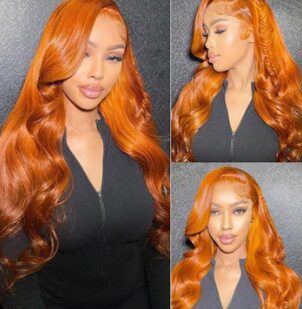Wigs have been a major part of human adornment for centuries, transcending cultures and time periods to become a versatile accessory with a fascinating history. From ancient Egypt to the fancy powdered wigs of European aristocrats, they’ve played diverse roles in fashion and identity.
The concept of wigs goes way back to ancient Egypt around 2700 BCE. Egyptians rocked wigs not just to look stylish, but also to beat the scorching heat. Wigs became a symbol of power and status, worn by pharaohs and fancy folks to show off their social standing. As time went on, wigs evolved to match the changing fashion trends.
In the Renaissance era, wigs made a comeback in Europe. Elaborate wigs with ribbons, flowers, and jewels became the ultimate fashion statement for the upper class. The court of Louis XIV in France took wig fashion to a whole new level with extravagant designs that showcased the luxurious lifestyle of the time.
But it was the 18th century that really took wig fashion to its peak. Powdered wigs became all the rage, worn by both men and women. These wigs were carefully styled and powdered to achieve a fashionable and refined look. They were like the ultimate accessory to complete any fancy outfit.
So, wigs have come a long way, from ancient Egypt to the European courts. They’ve always been a way to express style and status. It’s pretty amazing how something as simple as a wig can have such a rich and fascinating history.
The French Revolution brought about a shift in attitudes towards wigs, with people moving away from the extravagant styles that were associated with the monarchy. As society changed in the 19th century, wigs started to mimic more realistic hairstyles to match the preference for natural hair. The industrial revolution made wigs more accessible to a wider range of people through mass production. And then came Hollywood in the 20th century, where film stars and celebrities popularized wigs as a way to transform their looks for different roles. Synthetic wigs became a hit in the 60s and 70s, offering affordability and versatility. Nowadays, wigs have made a comeback, serving not just as a fashion statement but also as a practical solution for individuals dealing with hair loss. The wig industry has expanded to cater to diverse needs and preferences. From thick to thin, from curly to straight and from blue to green there is almost availability of every type of wig in the market. With the progressing market of wigs it has been easier to shift into the desired look without cutting or styling the hairs. Wigs have always been both a time saviour and natural hair protectors. They allow the hustle free achievement of a stylish look. For people struggling with thin and non voluminous hair wigs are the top choice to enhance their overall look and minimize their depression.
The artistry and craftsmanship behind wig making have truly reached extraordinary levels. Designers and artisans are constantly pushing the boundaries of creativity to create stunning and intricate wigs. It’s incredible to see how wigs have not only played a role in fashion but also hold cultural significance across the globe. From historical contexts to the modern runway, wigs continue to captivate us with their beauty and serve as a timeless form of self-expression and adornment. Talking about stylish looks, hair problems, modern fashion and personality grooming everything demands unique hairs for which wigs have become the top notch tools. In the modern world wigs are the significant styling accessories with a diverse and rapidly growing market.


